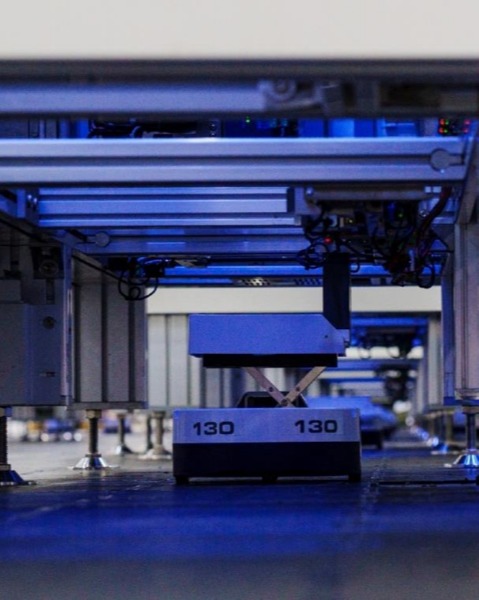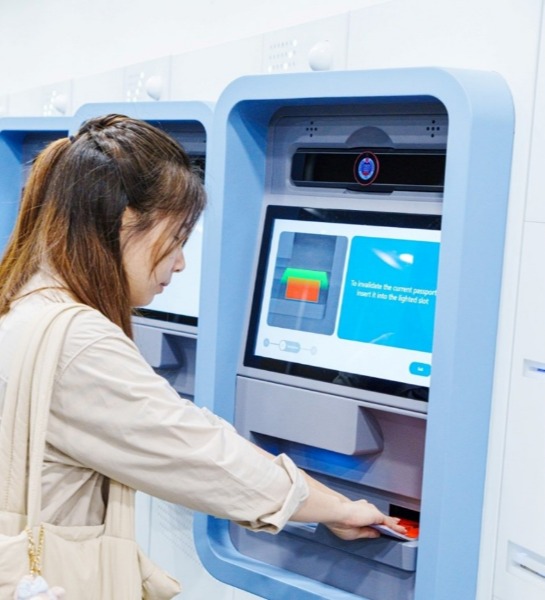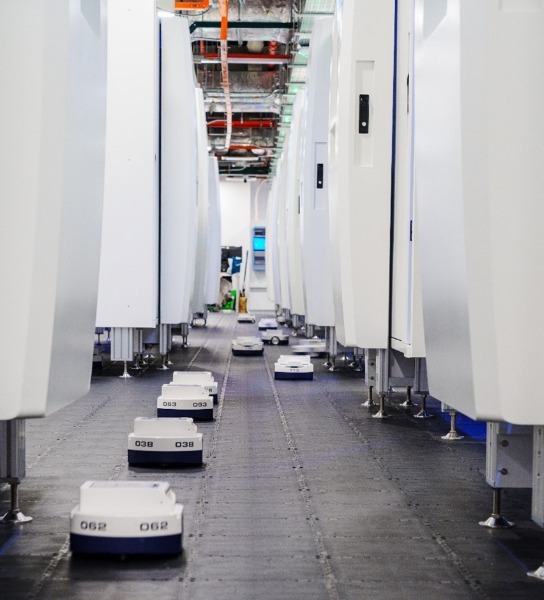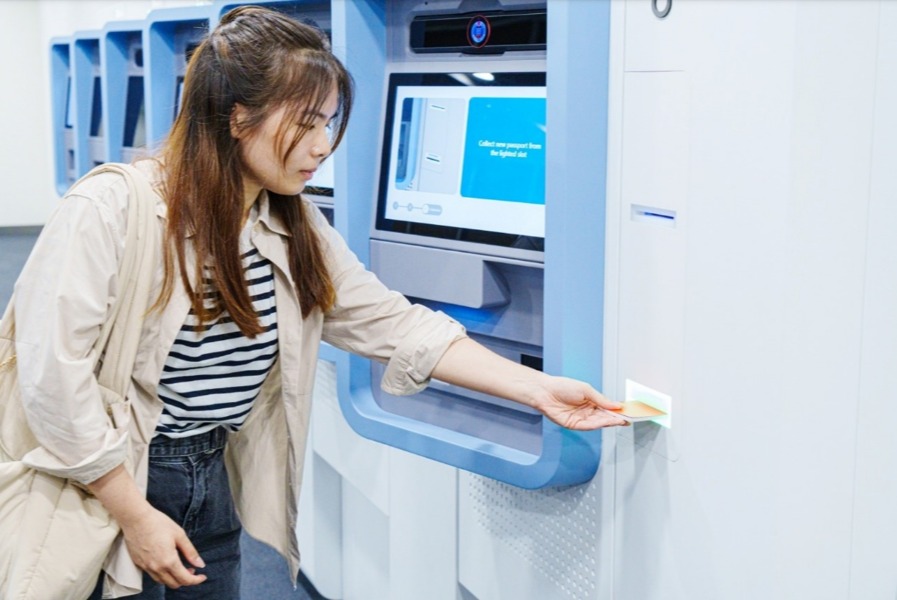ICA Opens New Services Centre at its Workplan Seminar
The Immigration & Checkpoints Authority’s (ICA) new Services Centre (ISC) was officially opened by Mr K Shanmugam, Coordinating Minister for National Security and Minister for Home Affairs today. The opening was held in conjunction with ICA’s Workplan Seminar themed “Transforming Service Delivery, Forging Ahead Together”.
2. 2025 has been a significant year for ICA. We are one of the first border agencies in the world to implement passport-less immigration clearance and make automated clearance the norm for all visitors under our New Clearance Concept (NCC). At the same time, we have transformed our delivery of immigration and registration services as part of our Services Centre Next Generation (SCNG) plans which we announced in 2019. The new ISC is the culmination of our SCNG plans
ICA’s Transformation Journey – SCNG
Leveraging Digital, Robotic, Biometric and Automation Technologies to Enhance Customer Experience
3. Today, close to 95% of our services are digital, and more than 95% of our customers submit their applications online.
4. For customers who still need to transact with us in person at the ISC, ICA has enhanced our processes to further improve our service delivery and the customer experience.
• Our digital check-in system, the Appointment and Queue System (AQS), enables customers with an appointment to check-in and obtain a queue number up to one hour prior to their arrival at the ISC. Upon arrival, they can proceed straight to the designated service room, reducing waiting time on-site.
• Since July 2025, ICA’s newly launched Integrated Smart Document Management System (iSMART) – a comprehensive document sorting, storage, retrieval and issuance system that leverages automation, robotic and biometric technologies – allows eligible customers to conveniently collect their passport and/or identity card at self-collection kiosks at the ISC at any time on the day of their appointment, instead of at manned counters (refer to the Appendix for more information). [1]
• To cater to wheelchair-bound customers, there are height adjustable self-service collection kiosks.
5. Our systems have also been redesigned such that the ISC is able to provide holistic assessments of various applications submitted by our customers.
• The Integrated Processing System (IPS) e-Services, which houses Singapore Citizenship (SC), Permanent Residence (PR) and Long-Term Visit Pass (LTVP) applications under a single digital platform, allows family members to apply for the same immigration facility together. For example, a Singaporean sponsoring multiple immediate family members for LTVP would previously have had to submit separate applications for each person. With the IPS e-Service, the sponsor only needs to submit a single application.
6. Amidst our transformation efforts, ICA continues to adopt a “Digital-First, but not Digital-Only” approach. Members of the public who are unable to transact with ICA digitally can receive in-person assistance at the dedicated ‘iAssist’ area on Level 2 of the ISC.
Redesigned Processes to Provide Multiple Services at a Single Point
7. With the ISC, ICA has integrated all our information services, previously located across five different levels of the old ICA Building, into a single level, allowing customers to much more easily obtain the information they need.
8. Instead of counters dedicated to serving only one immigration product or facility, the ISC has service rooms in which we can handle multiple products and facilities, like the issuance of passports, identity cards and other passes, as well as other services such as the completion of immigration formalities and extension of stay. This set-up offers greater flexibility to our deployment of resources.
Enhanced Job Roles, Upskilled Officers
9. We have enhanced the knowledge and skillsets of our officers to be able to handle multiple immigration products and facilities, to deliver an improved customer experience.
10. Since 2023, ISC staff have been progressively trained to holistically assess and handle cases which may involve more than one immigration product and facility. They are now equipped with the knowledge and skillsets to be able to respond to enquiries on different products and facilities at a single information counter, and to handle both passport and identity card issuance, as well as completion of formalities for various immigration facilities, in a single service room.
ICA’s Transformation Journey – NCC
11. ICA has achieved our NCC vision to transform checkpoint clearance operations. Despite traveller volume increasing significantly by almost 20% in 2024 as compared to 2023, ICA was able to provide more secure, faster, and more seamless immigration clearance for all travellers and all types of conveyance.
12. All travellers now enjoy automated immigration clearance. Passport-less clearance has also provided a hassle-free and faster experience. We offer two types of passport-less clearance:
• At Changi Airport, Tanah Merah Ferry Terminal, and Marina Bay Cruise Centre, all Singapore residents and departing visitors can clear immigration via token-less clearance, simply by scanning their facial and iris biometrics, without the need to present their passport. Token-less clearance will be extended to Seletar Airport from August 2025.
• At the land checkpoints, all travellers can use QR code clearance in lieu of passport, except for first-time foreign visitors and those re-entering Singapore using a different passport from the last visit.
13. As of 30 June 2025, about 93 million travellers have cleared immigration without having to present their passport.
14. The NCC has also enhanced border security with new profiling and detection capabilities. ICA has set up the Integrated Targeting Centre (ITC), to leverage advance traveller information and data analytics to identify high-risk travellers before they arrive in Singapore. The number of foreigners refused entry due to immigration or security risks rose by 43% from January to June 2025 compared to the same period in 2024. The number of contraband smuggling cases detected by ICA at the checkpoints also rose, by 28%, during the same timeframe.
Enhancing Security Beyond Our Borders
15. ICA continues to innovate and adapt to the evolving needs of our operational landscape.
Upcoming Initiatives
16. To detect and stop high risk travellers even before they arrive in Singapore, ICA will be implementing the issuance of No-Boarding Directives (NBD). The NBD will instruct transport operators to deny boarding to high-risk travellers on transportation bound for Singapore. This will further bolster Singapore's border security by preventing individuals who pose security, immigration, or health risks from even reaching our checkpoints. More details on the implementation timeline will be shared in due course.
17. At the checkpoints, ICA is planning to roll out the Automated Passenger Clearance System (APCS) at Tuas Checkpoint from end-2026. The APCS will enable automated self-immigration clearance for travellers in cars, motorcycles, and cargo vehicles without them having to exit their vehicle. With the APCS, ICA can operate a higher clearance throughput, 24/7, without the need for a significant increase in manpower.
18. The Johor Bahru-Singapore Rapid Transit System (RTS) Link will commence operations by December 2026. It will help ease congestion at the Causeway. RTS Link trains can carry up to 10,000 passengers per hour in each direction, with each journey taking about five minutes. The RTS Link co-locates Singapore and Malaysia customs, immigration, and quarantine facilities, and allows travellers to clear immigration only once in their journey, at their point of departure.
19. To provide a long-term solution to the chronic congestion at the Causeway, Woodlands Checkpoint (WCP) will be redeveloped and expanded in phases over the next 10 to 15 years. Aside from improving clearance efficiency, redeveloping WCP would also allow ICA to conduct security checks away from the core checkpoint structure to mitigate security risks, as well as provide holding areas for traffic to reduce local road congestion. With the redeveloped WCP, the average travel time during peak periods will be reduced from 60 minutes to 15 minutes.
20. Our cargo scanning capabilities will also be enhanced through leveraging artificial intelligence to analyse scanned radiographic images of cargoes from 2028.
21. ICA will continue to adapt and innovate to improve customer experience, improve work processes for our officers, and make Singapore a safer home for our loved ones.
IMMIGRATION & CHECKPOINTS AUTHORITY
31 JULY 2025
[1] Customers can still collect their passport and/or identity card at designated SingPost outlets islandwide. Most outlets are open on Saturdays, with one outlet also open on Sundays. About 80% of passports and identity cards are collected at SingPost outlets.
Appendix – Information on the Self-Collection Kiosk
• The self-collection kiosks are part of the ISC’s new iSMART system, which enables the automated sorting, storage, retrieval and issuance of passports and identity cards. Previously, these documents were handled manually by ICA staff. Today, such processes are carried out by 108 robots operating within the ISC.
• In the past, each counter issuing documents had to be manned by an officer. With the rollout of self-collection kiosks, only 5 officers are required to oversee 20 kiosks.
• Customers will be able to collect their passport and/or identity card within 5 minutes of their arrival at the self-collection kiosks, allowing time savings of up to 55% compared to the manual retrieval and collection of these documents.
• The self-collection kiosks may be used by customers who have made an appointment at the ISC. They may collect their document(s) at any time during the operating hours of the ISC on the appointment date.
• Feedback from customers who were engaged by ICA to trial the self-collection kiosks has been positive. They found that the self-collection process, including the verification of their biometrics, is fast, convenient and user-friendly.
Overview of document collection process at the self-collection kiosks:
| 1. | Customers input their personal identification information into the self-collection kiosk and complete their iris verification. 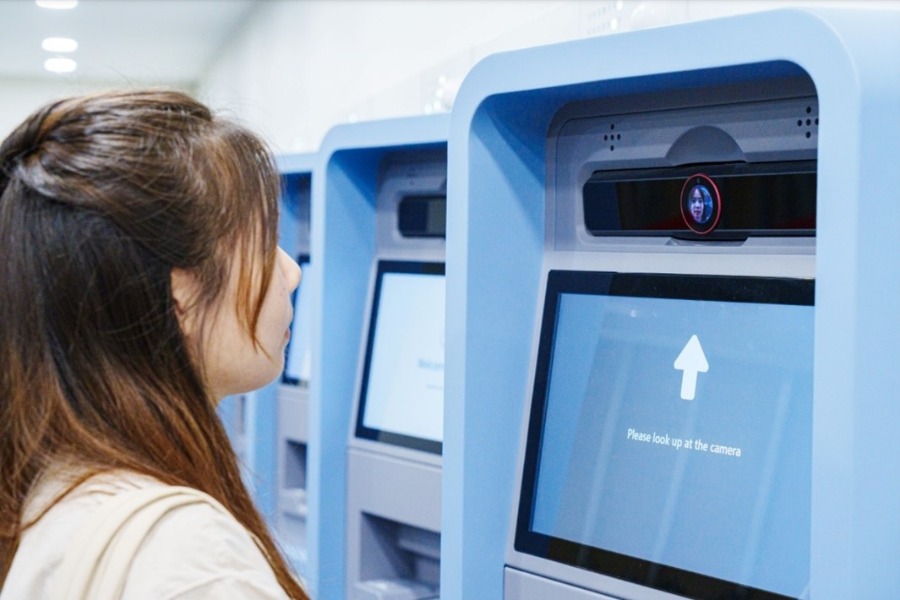 |
| 2. | Automated robot retrieves the required document(s) from storage.
|
| 3. | Customers with current valid document(s) insert their document(s) into the self-collection kiosk for invalidation.
|
| 4. | Automated robot proceeds to the self-collection kiosk to hand over the document(s).
|
| 5. | Self-collection kiosk issues the document(s) to the customer.
|


